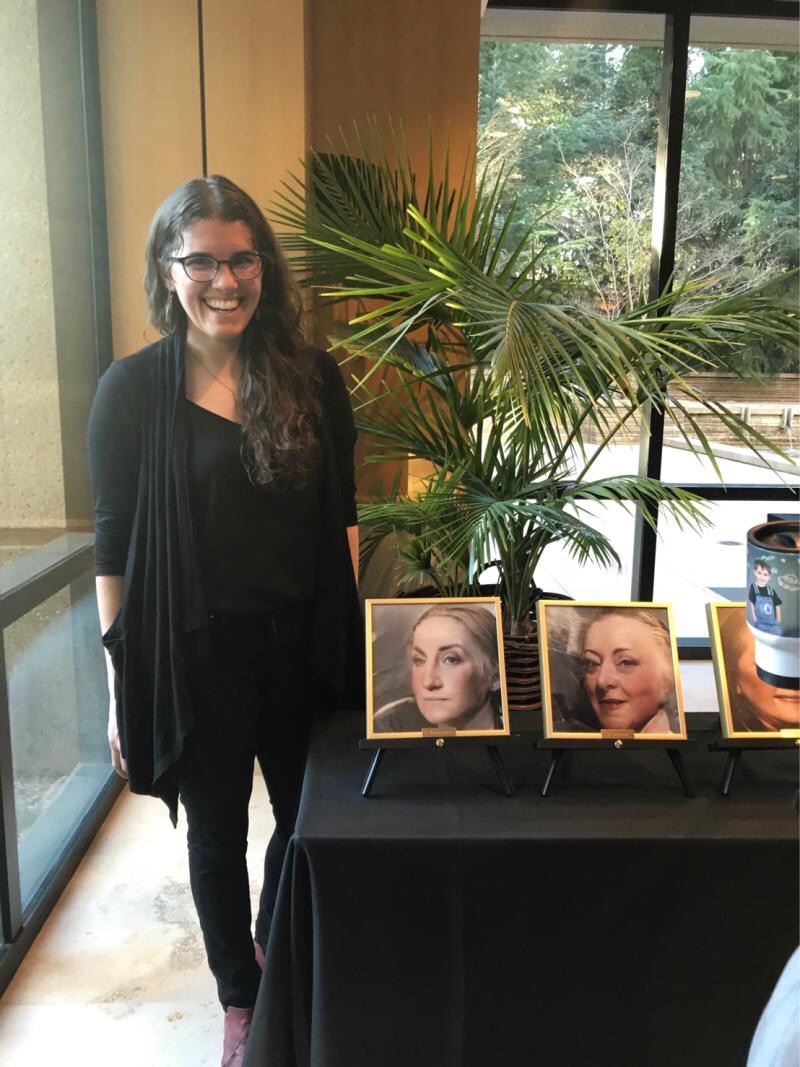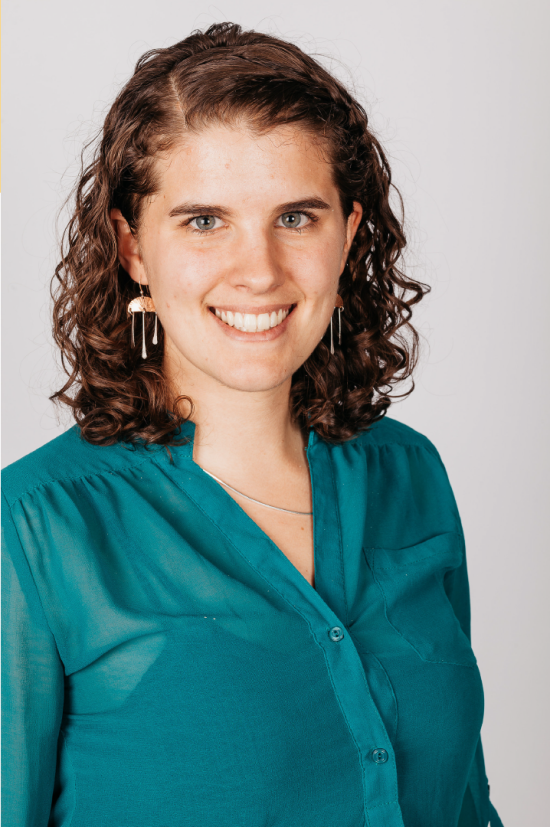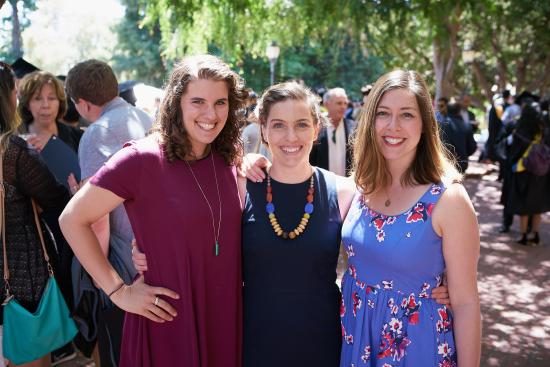Andrea Gagliano graduated from the School of Information with a master's in information management and systems in 2017. Prior to the I School, she graduated from the University of Washington with a B.Sc. in mathematics and a B.A in business administration. She is currently head of data science in AI/ML at Getty Images, where she combines art and technology by working on visual search.
What was your focus at the I School?
I had a very wandering path at the I School. I told myself it was my time to explore — to gravitate towards the things that were of interest and disregard the things that weren’t. Although my path at school wasn’t particularly focused, looking back now, I can see the thread and themes that linked what I was doing together. At first, I was really into user experience design but figured out through my internship that that wasn’t quite right — but it gave me empathy for users. From that, I found natural language processing and was intrigued by the combination of math and data science applied to a more subjective area like language and poetry. This then led to an interest in machine learning applied to creativity. I then explored collaborative art, such as painting, between machines and humans. Simultaneously, I was taking classes on critical design out of the Center for New Media and Jacobs Design, trying to use art as a way to question and critique technology and bring everyday people into the rich conversations we were having at the I School about privacy, biases, ethics — many topics that weren’t yet in the mainstream media at the time. The threads that tied my path together were machine learning for creativity and using art as a way to challenge and question the technologies that we build.
What was your favorite class?
Marti Hearst’s class on Natural Language Processing definitely opened my eyes to the world of machine learning. I had studied mathematics in undergrad, but it was all theoretical and writing proofs. This was the first time I had started using a lot of that knowledge and put it to use in an application practically with something I enjoyed. This was also the course where my coding skills got a lot better. Having a project I was interested in motivated me to understand the machine learning fundamentals. Many of these fundamentals I still lean on in my work today leading a team of data scientists who work on projects ranging from NLP to computer vision to search algorithms.
You’re currently the Head of Data Science in AI/ML at Getty Images, what compels you to work in the field of data science and visual search?
Nearing the end of my time at the I School, I was beginning to see the potential for machine learning to help creative people, especially novices, to help them get started or be inspired. When I was growing up, I didn’t want to have anything to do with art — whether that be drawing, painting, writing, none of it — because I didn’t think I was good at any of it. I fell in love with these activities later in life and they brought so much joy and color into how I see the world. I wished I hadn’t been afraid of art early on and thought how creatively intelligent tools could have helped spur that exploration.
You have spent time looking into the intersection between creativity and technology—previously designing an algorithm to write poetry and now reimagining presidents as women. How did this interest manifest and how have you pursued this interest?
Growing up, I was the ‘math girl’. Ever since kindergarten, math was the only thing I excelled at in school; it was what I was known for among my friends. My parents were more artistic, but I wanted nothing to do with art because I didn’t think I was good enough. In undergrad, there was a required arts credit so I did an immersive poetry program. It turned out to be incredible — the structures you could play with, the rhymes, the rules you could break with words. It really opened my eyes to seeing things not just as black or white (as I had in math), but instead seeing the nuance, subjectivity, and intricacies.
The natural language processing course I took at the I School, with Emily Paul, wrote a poetry generation engine. This was 2016 and hadn’t yet been done much by others at the time. I was so intrigued and energized by the project and all the open, unresolved questions like: Who is the author of the poem? Is it still a poem or a different genre of poem? What does it mean for a human and a machine to collaborate together? Does this collaboration help the creative or hinder them? Is that different for a novice versus an expert? Is the machine a tool or a creative agent? What is the role of creatives, and creative works, in training these models? I’m still grappling with these questions today, just for visuals, not words. I think this manifested because I wish I had found my love of creativity sooner in life and in some way hope that tools like these will help others find their creative path.
Can you share any thoughts on how your identity has shaped your path?

I have definitely struggled with imposter syndrome these last few years of my career as a woman in technology, as someone who grew rapidly from an individual contributor to a director, and as someone with direct reports who are many years older than me. I think this imposter syndrome has continued to fuel my fire and motivates me to rise to the occasion, which in turn has led to more opportunities that challenge me and force me out of my comfort zone. While not a sustainable cycle, it has been a valuable tool. Conversely, leading without being the expert or the one with decades of experience has forced me to lead with humility. I often don’t have the answers, but I’ve developed the ability to get a group of people in a room and figure out the answer by asking questions, facilitating the discussion, and seeing the forest in the trees to quickly identify the right path forward. I think this is my unique leadership skill that could only have been developed by being in the position I’m in.
Many of Getty Images’ customers are creatives themselves and when they come to our site to search for videos and images, our goal is to make that process easier and inspire them in their work. With the recent advancements in AI image generation tools, the field is evolving. These tools have a lot of potential to help creatives, but also need to be built with creators front and center. I feel I can help navigate this new frontier through my work at Getty Images.
Another perk of working at Getty Images is I get to speak with world-leading content experts in visual storytelling. When I work with our creative team members, I’m constantly in awe of the nuance with which they can describe a photo or video and speak to what led to an emotion-evoking visual. The visuals each of us see every day impact us and move us, and that is an inspiring mission to support.
What advice would you give your past self as an I School student?
The biggest piece of advice that I’d give is to explore and double down on the things that truly energize you. That most likely means that isn’t what your peers are doing, may not be what big tech is doing, and may not fit nicely into the classes you are taking. But, notice what energizes you, stick to that, and don’t overthink it.
I would also say impact. I didn’t really understand that word until recently. To me, it means putting your energy towards making the most impact or the most change or improvement. Instead of putting your energy towards always getting it right or activities on a to-do list that will only change things incrementally, ask yourself these questions: What can you do that makes a real change or real difference in your area of interest? Does it impact a large number of people? Or, maybe a small number of people but it’s something that is incredibly helpful to them? Are you building the perfect solution that will take years to build or cost-prohibitive, or the one that will make a change quickly?
At the I School, I was drawn to projects that I thought were interesting, but weren’t impactful. Not everything needs to be — especially when you’re learning and exploring — but ‘what impact is this having?’ can be a helpful and powerful lens to guide your work.










